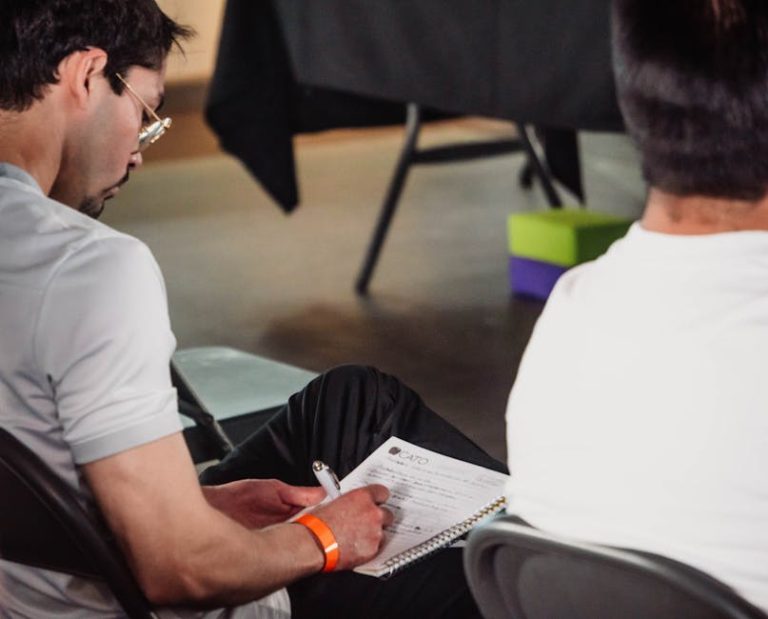
The Ultimate Guide to IT and Coding Courses for Beginners
In today’s increasingly digital world, information technology and coding have become foundational skills, opening doors to innovation, career opportunities, and creative expression. For beginners, the journey into IT and programming can seem overwhelming—filled with unfamiliar terms, countless languages, and an ever-evolving landscape of tools. However, with the right guidance and resources, anyone can start this transformative path. This comprehensive guide is designed to help you navigate the world of IT and coding courses, offering clarity, direction, and inspiration as you take your first steps.
Why Learn IT and Coding?
Before diving into course recommendations, it’s important to understand the value of acquiring these skills. Information technology encompasses the design, implementation, and management of computer-based systems, while coding—or programming—involves writing instructions for computers to execute. Together, they form the backbone of modern technology, from websites and mobile apps to artificial intelligence and cybersecurity.
Learning IT and coding offers numerous benefits:
- Career Opportunities: The demand for tech professionals continues to soar, with roles in software development, data analysis, network administration, and more offering competitive salaries and growth potential.
- Problem-Solving Skills: Coding teaches logical thinking and structured problem-solving, applicable well beyond programming.
- Creativity and Innovation: Technology enables you to build solutions, create digital art, and develop tools that can impact millions.
- Future-Proofing: As automation and digital transformation accelerate, tech literacy becomes essential in almost every industry.
Getting Started: What You Need to Know
As a beginner, it’s easy to feel unsure about where to begin. Here are a few key points to keep in mind:
- You Don’t Need a Background in Tech: Many successful programmers and IT professionals started from scratch. Curiosity and persistence are more important than prior experience.
- Start with the Basics: Focus on foundational concepts such as how computers work, what programming languages do, and what area of IT interests you most.
- Practice Consistently: Learning to code is like learning a musical instrument—it requires regular practice and patience.
Types of IT and Coding Courses for Beginners
There is a wide variety of courses available, ranging from free online tutorials to structured degree programs. Below, we break down the most popular and effective types of courses for beginners.
1. Online Interactive Platforms
Websites like Codecademy, freeCodeCamp, and Khan Academy offer interactive coding environments where you can write code and see results immediately. These platforms are ideal for absolute beginners because they provide step-by-step guidance and instant feedback.
- Codecademy: Known for its user-friendly interface, Codecademy offers courses in Python, JavaScript, HTML/CSS, and more. Its hands-on approach helps build confidence quickly.
- freeCodeCamp: This free platform includes extensive curricula in web development, data visualization, and even machine learning. It also emphasizes building projects for nonprofits, giving you real-world experience.
- Khan Academy: Offers introductory courses on computer programming and computer science, using a mix of video lessons and interactive exercises.
2. Video-Based Courses
If you prefer learning through videos, platforms like Udemy, Coursera, and edX host courses created by universities and industry experts.
- Udemy: Features affordable courses on nearly every tech topic, from beginner Python to ethical hacking. Look for highly rated classes with plenty of practice activities.
- Coursera and edX: Offer courses from institutions like Harvard, MIT, and Stanford. Many are free to audit, with certificates available for a fee. Recommended beginner courses include “Python for Everybody” and “CS50’s Introduction to Computer Science.”
3. Coding Bootcamps
For those seeking intensive, career-focused training, coding bootcamps like General Assembly, Flatiron School, and Le Wagon provide full-time or part-time programs that typically last from a few weeks to several months. These are more expensive but often include career support and networking opportunities.
4. University Degrees and Certificates
If you’re looking for a formal education, many universities offer online degrees and certificates in computer science or IT. These are more time-consuming and costly but provide a comprehensive foundation.
5. Books and Documentation
Don’t underestimate the value of a good book! Titles like “Automate the Boring Stuff with Python” or “HTML and CSS: Design and Build Websites” are great for beginners. Official documentation for languages like Python and JavaScript also provides invaluable insights.
Choosing the Right Language
As a beginner, you might wonder which programming language to learn first. Here’s a quick overview of beginner-friendly languages:
- Python: Known for its simple syntax and readability, Python is widely used in web development, data science, and automation.
- JavaScript: Essential for web development, JavaScript allows you to build interactive websites.
- HTML/CSS: While not programming languages per se, HTML and CSS are must-learns for anyone interested in web design.
- Java: A versatile language used in mobile app development (Android) and enterprise systems.
- Scratch: A visual programming language designed for children and absolute beginners, great for understanding programming logic.
Most experts recommend starting with Python or JavaScript due to their simplicity and widespread use.
Learning Paths by Interest
Your choice of course may depend on your interests and goals. Here are some common learning paths:
- Web Development: Start with HTML, CSS, and JavaScript, then move to frameworks like React or Node.js.
- Data Science: Begin with Python, learn libraries like Pandas and NumPy, and study statistics and data visualization.
- Mobile Development: Choose between Swift (for iOS) or Kotlin/Java (for Android).
- IT and Networking: Focus on certifications like CompTIA A+ or Cisco’s CCNA, which cover hardware, networking, and security basics.
Tips for Success
No matter which course you choose, these tips will help you make the most of your learning journey:
- Set Clear Goals: Define what you want to achieve—whether it’s building a website, getting a job, or simply understanding technology better.
- Code Every Day: Consistency is key. Even 20 minutes daily is better than occasional long sessions.
- Build Projects: Apply what you learn by creating simple projects, like a personal website or a small game. This reinforces your skills and builds your portfolio.
- Join a Community: Participate in forums like Stack Overflow, Reddit’s r/learnprogramming, or local meetups. Learning with others keeps you motivated and provides support.
- Embrace Challenges: Debugging errors and overcoming obstacles are part of the process. Don’t get discouraged—every programmer faces these issues.
Conclusion
Embarking on the journey to learn IT and coding is one of the most rewarding decisions you can make in the digital age. With a wealth of courses available for beginners, there has never been a better time to start. Remember that progress takes time, and every expert was once a beginner. Stay curious, practice regularly, and leverage the resources outlined in this guide. Your path to becoming a confident IT professional or programmer begins today—happy coding!






